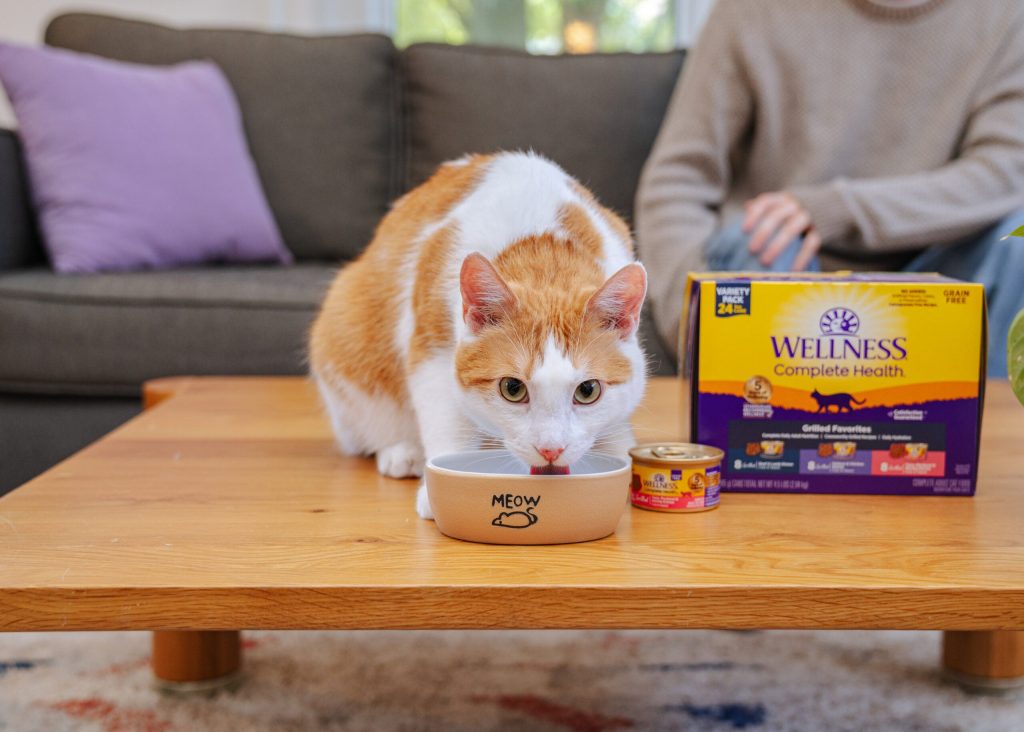Natural Feeding for Pets: Benefits and Challenges

Exploring Natural Feeding for Pets
As pet owners become more mindful of their animals’ health and well-being, natural feeding has gained traction as a preferred dietary approach. This method not only aims to provide pets with wholesome, unprocessed ingredients but also strives to reflect their ancestral diets, which can enhance their quality of life. The trend is partly driven by a desire for transparency in what goes into pet food, allowing owners to know exactly what their pets are consuming.
Benefits of Natural Feeding
One of the primary advantages of natural feeding is the improved digestion that many owners report. Whole foods are more aligned with the diet that pets would naturally consume in the wild, making it easier for their digestive systems to process and utilize these nutrients effectively. For instance, dogs and cats may thrive on high-quality meats, vegetables, and fruits, which can result in less gastrointestinal distress and healthier stools.
The second significant benefit is the better nutritional value of fresh ingredients. By integrating a variety of whole foods, pet owners can ensure their pets receive essential vitamins, minerals, and antioxidants. For example, adding a small amount of blueberries or pumpkin can boost a pet’s immune system and promote healthy skin and fur. This diet customization allows pet owners to address specific health issues, such as dental problems or obesity, through ingredient selection.
Another compelling reason for adopting natural feeding is its potential for allergy management. Many commercial pet diets contain fillers and artificial additives that can trigger allergies and sensitivities in pets. By minimizing or eliminating these substances, owners may observe a reduction in symptoms like itching or digestive upset, which often leads to a happier and healthier pet overall.
Challenges to Consider
Despite the apparent benefits, transitioning to a natural diet presents its share of challenges. One significant hurdle is the cost implications. Natural and organic pet food can be significantly more expensive than conventional options, putting financial pressure on pet owners who want the best for their companions. Additionally, sourcing high-quality ingredients can be a time-consuming process, as it requires planning grocery trips to ensure freshness.

Another concern is the time consumption involved in meal preparation. Unlike simply pouring kibble into a bowl, natural feeding demands time spent chopping, cooking, and storing food. This complexity can deter busy pet owners, especially if they are juggling work and family commitments.
Furthermore, there is the issue of knowledge gaps. A well-balanced diet tailored to a pet’s specific needs is essential but can be challenging to achieve without proper research. Owners may need to consult with veterinarians or pet nutritionists to create meal plans that meet their pets’ dietary requirements, which can further complicate the process.
In conclusion, understanding the benefits and challenges of natural feeding enables pet owners to make informed decisions regarding their pets’ nutrition. By weighing the advantages against the potential downsides, owners can create a feeding strategy that best suits their pets and lifestyle. As awareness about pet nutrition continues to evolve, the insights gained from exploring natural feeding will help bolster the health and happiness of pets across the country.
DISCOVER MORE: Click here to learn about the benefits of keeping your pets active
Benefits of Natural Feeding: A Closer Look
Transitioning to a natural feeding regimen can be a game changer for pet owners eager to enhance their furry companions’ health. Beyond just improved overall well-being, there are numerous specific benefits that pet owners can experience when they prioritize a natural diet.
Improved Digestion and Health
One significant benefit of natural feeding is the impact on a pet’s digestive health. Pets fed a diet rich in natural ingredients often experience better digestion than those consuming traditional processed foods. Whole foods—such as fresh meats, vegetables, and grains—are easier for pets’ digestive systems to process. For instance, many dog owners find that switching to a natural diet significantly reduces issues like bloating, gas, and vomiting. Cats also show marked improvement in their litter box habits, producing less odorous and more compact stools.
High Nutritional Value
Natural feeding not only enhances digestion but also increases nutritional value significantly. Pets fed a balanced diet of fresh ingredients are often more energetic and healthier overall. Some key elements include:
- Vitamins and Minerals: Fresh ingredients are packed with essential nutrients that support immune function, skin health, and coat shine.
- Antioxidants: Ingredients like blueberries and spinach contribute antioxidants that help fight free radicals and reduce the risk of chronic diseases.
- Tailored Nutrition: Pet owners can customize diets based on their pets’ specific health issues or needs, such as weight management or joint health.
According to various studies, pets that consume a diet emphasizing natural ingredients often appear more vibrant and suffer from fewer age-related health issues. This trend is so compelling that many veterinarians endorse natural feeding as a preventative health measure.
Allergy Prevention and Management
Another compelling reason to consider a natural diet is its potential for allergy management. Many commercial pet foods contain fillers, artificial preservatives, and allergens, leading to various health issues in pets, including skin irritations and digestive problems. By adopting a natural feeding approach and eliminating these harmful additives, pet owners frequently report a notable decrease in allergic reactions. Ingredients commonly associated with pet allergies—like corn, soy, and certain meat sources—can often be avoided by using whole food alternatives. This approach not only improves quality of life but fosters a deeper bond between pet and owner as they work together to promote health.
Challenges in Embracing Natural Feeding
While the benefits of natural feeding are extensive, it is essential to address the challenges that come with this dietary transition. Understanding these obstacles can help pet owners better navigate the world of pet nutrition and ultimately lead to successful outcomes for their furry friends.
First and foremost, the cost implications of natural feeding can be daunting. Organic produce, high-quality proteins, and specialty ingredients come at a premium compared to traditional pet foods. Many pet owners may find themselves adjusting their budgets, realizing that the investment in their pets’ health may require sacrifices in other areas.
Time consumption also plays a role. Unlike merely pouring kibble into a bowl, natural feeding often involves significant meal preparation—chopping, cooking, and storing ingredients—which can be overwhelming for busy pet owners. This additional time requirement can be a decisive factor when considering a dietary change for pets.
In addition, the process of creating a balanced diet can uncover knowledge gaps. Developing a proper meal plan that aligns with a pet’s nutritional needs may require research or consultation with a veterinarian or pet nutritionist. Without proper guidance, owners risk nutritional deficiencies that could detrimentally affect their pets’ health.
In summary, while embracing natural feeding for pets presents numerous advantages, understanding the corresponding challenges is crucial for success. As the conversation around pet nutrition continues to evolve, pet owners must carefully weigh the pros and cons to make informed dietary decisions that will benefit their beloved companions.
| Advantages | Details |
|---|---|
| Improved Health | Natural feeding can lead to better digestion and a healthier weight, minimizing the risk of obesity and related diseases. |
| Enhanced Energy Levels | Pets may experience higher energy levels, which can improve their overall behavior and activity levels, leading to a happier life. |
Incorporating natural feeding into your pets’ diets presents an exciting opportunity for pet owners who wish to enhance their pets’ well-being. Improved health outcomes are often seen as crucial advantages of this approach, particularly when considering the long-term effects of high-quality nutrition. Furthermore, pet owners may notice an increase in their pets’ energy levels, which can significantly impact their daily interactions and exercise routines. However, this transition to a more natural diet does bring challenges as well. Cost factors, sourcing quality ingredients, and ensuring balanced nutrition must be addressed. Nevertheless, understanding these advantages can motivate pet owners to pursue natural feeding for their furry companions. As you delve deeper into this topic, you’ll find even more intriguing facts and insights that can aid you on this journey.
DISCOVER MORE: Click here to learn about canine communication
Long-Term Commitment and Lifestyle Changes
Transitioning to natural feeding for pets also necessitates a long-term commitment that extends beyond just initial changes. This commitment begins with understanding the dietary needs specific to each pet’s life stage, size, and activity level. For instance, a growing puppy may require more protein, while a senior dog might benefit from a diet lower in calories but higher in fiber. Pet owners must be prepared to continually assess and adjust their pets’ diets as they age and their nutritional needs evolve.
Storage and Freshness Considerations
In adopting a natural feeding approach, pet owners frequently encounter storage challenges as well. Unlike commercially prepared pet food that has a long shelf life, fresh ingredients must be stored properly to maintain nutritional integrity and prevent spoilage. This requires dedicated space in the refrigerator or freezer and sometimes even a different shopping routine—frequent trips to the market to procure fresh ingredients become the norm, potentially complicating the overall feeding process.
Potential Behavioral Changes
Shifts in diet can also lead to behavioral changes that pet owners need to monitor. Some pets may initially resist the transition from processed food to a natural diet and could exhibit signs of reluctance to accept new foods. Patience and persistence are essential during this phase, which may require gradual integration of new ingredients to ease the transition. Owner involvement, such as making mealtime engaging and rewarding, can help in mitigating any initial pushback from pets.
Access to Expert Guidance
One major aspect that is often overlooked is the importance of access to expert guidance. As pet owners embrace natural feeding, they may quickly find themselves seeking out resources such as veterinarian consultations or pet nutritionists. Ensuring that one has access to reliable sources of information is crucial to avoid the pitfalls of misinformation. Specific breed requirements or known food sensitivities need to be considered, and consulting with professionals can significantly ease the journey towards a successful natural diet.
- Online Resources: Many reputable websites and veterinary services offer guides and meal planning templates.
- Community Support: Joining pet nutrition forums or groups can provide valuable insights and shared experiences from other pet owners navigating the same challenges.
Furthermore, some pet food companies are beginning to offer subscription services that deliver pre-portioned, organic meals tailored to specific pets’ dietary needs. This innovation addresses two major challenges: quality control and convenience, making natural feeding more accessible.
Balancing Convenience and Quality
Ultimately, pet owners face a continuous balancing act between convenience and quality. The allure of ready-to-feed, commercially prepared diets can be tempting, especially for those with busy lifestyles. However, many owners find that investing time and energy to prepare meals for their pets reinforces their commitment to a healthier lifestyle. It not only enhances the bond between owner and pet but often results in noticeable improvements in the pet’s overall vitality and longevity.
By navigating the complexities of transitioning to a natural feeding regimen, pet owners can unlock myriad benefits that may profoundly impact their pets’ lives. Understanding that the journey requires ongoing attention and adaptation will serve as a guiding principle, paving the way for sustainable and health-focused feeding practices.
DISCOVER MORE: Click here to find the perfect cat breed for you
Conclusion
In summary, the journey towards natural feeding for pets offers a wealth of benefits, such as improved health, increased energy levels, and enhanced vitality. However, it is also accompanied by unique challenges that require careful consideration and commitment. Pet owners must not only understand their furry companions’ nutritional needs throughout different life stages but also adapt their daily routines to accommodate the storage and preparation of fresh ingredients.
The potential behavioral changes during the transition phase highlight the importance of patience and gradual adjustments to new diets. By fostering a positive mealtime experience and incorporating expert guidance, pet owners can set their pets on a path to thriving health. Additionally, leveraging community support and online resources can provide valuable insights that make this transition smoother and more informed.
As the trend of natural feeding grows, innovative solutions such as pre-portioned subscription services are emerging, making it easier for busy pet owners to balance convenience and quality. Ultimately, the investment of time and effort in natural feeding practices not only nourishes pets but also promotes a deeper bond between pet and owner, resulting in a happier, healthier life together.
For those considering this lifestyle change, staying informed and committed to the evolving needs of their pets will be essential. Embracing natural feeding may be a complex journey, but the rewards—both for pets and their owners—are undeniably worth the effort.


